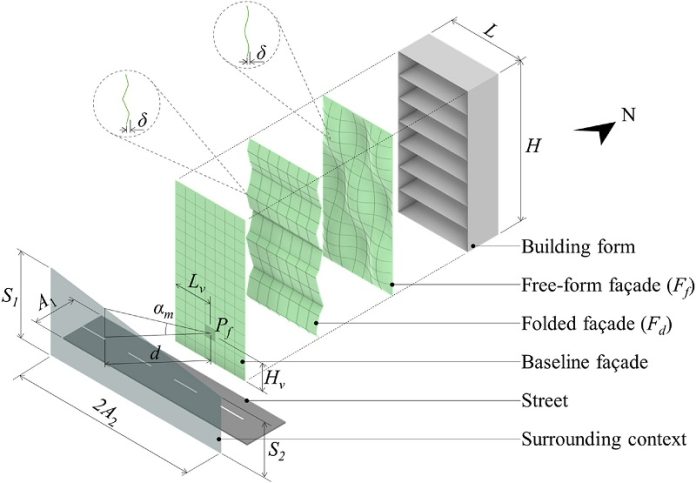
As buildings account for a significant portion of global CO2 emissions, finding ways to reduce their environmental impact is crucial.
In response, researchers from the University of Waterloo have created an innovative double-skin building façade that houses microalgae and uses machine learning to generate energy.
This design aims to transform buildings into net producers of energy, reducing their dependence on the power grid.
The technology, developed by Dr. Mohamad Araji and his team, is based on a double-skin façade structure. In this type of design, a building has two layers of glass walls with a space in between.
In the new design, this space contains a photobioreactor that grows microalgae. The microalgae absorb sunlight, helping to shade the building and provide natural insulation to maintain indoor temperatures.
This process reduces the need for heating and cooling, lowering energy costs and carbon emissions.
Dr. Araji, who directs Architectural Engineering at the University of Waterloo’s School of Architecture, explained, “Microalgae application in buildings transforms energy-efficient architecture into sustainable, living systems that capture carbon, lower thermal loads, and reduce energy demands and costs.”
He emphasized that integrating this system into large building façades, which have more surface area than rooftops, could be a significant innovation.
Two research papers detailing this technology were recently published in the Renewable Energy Journal and the Journal of Technology|Architecture + Design.
The first paper focuses on optimizing bioenergy generation in the building façade, while the second explores using neural networks to monitor microalgae growth in the photobioreactor.
Dr. Araji and Adham Elmalky, a Ph.D. graduate from the Department of Mechanical and Mechatronics Engineering, used computer simulations and machine learning to study different shapes and structures of glass walls, from flat to curved designs.
By optimizing these geometries, the researchers were able to boost microalgae growth by 80%, improving the overall energy efficiency of the building.
Elmalky noted, “Our system has improved the use of microalgae for indoor temperature control, and we envision that with the right building infrastructure, this enhanced volume of biomass can be converted into biofuel for a building’s power generation.” He also highlighted that this approach can help maintain indoor temperatures, particularly in cold climate countries like Canada, where buildings often lose heat in winter.
This new façade design is particularly relevant for regions where heavy snow accumulation limits the use of rooftops for solar panels. The double-skin façade approach offers a more efficient alternative, using the building’s vertical surfaces for energy production.
Looking ahead, the research team plans to collaborate with industry partners to further improve the photobioreactor’s design. They aim to reengineer the inner glass wall and refine other aspects based on their findings, ultimately making buildings more self-sustainable and energy-efficient.
This innovative system could pave the way for a new generation of eco-friendly buildings that actively produce their own energy while reducing carbon footprints.



